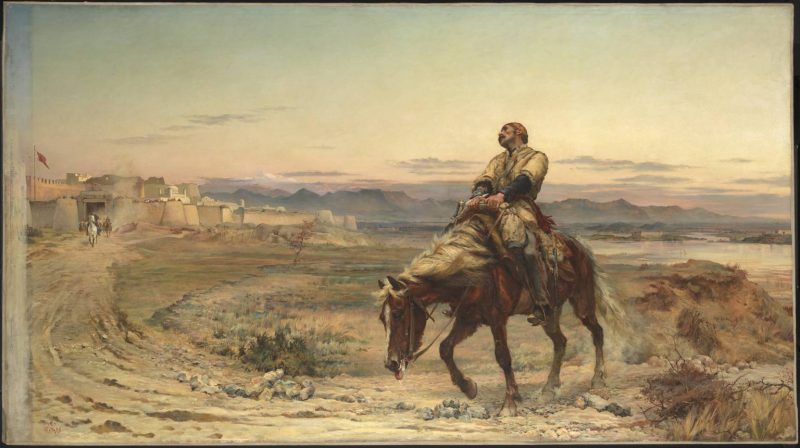In war, retreats aren’t always about defeat. Sometimes, they’re a deliberate tactic to gain more defensible ground, consolidate forces, encircle an enemy, or lead them into an ambush. In other cases, a retreat can change the destiny of entire nations, or contribute to the survival and growth of a new religion.
The following are just some examples of such cases.
1. First Battle of Pelusium
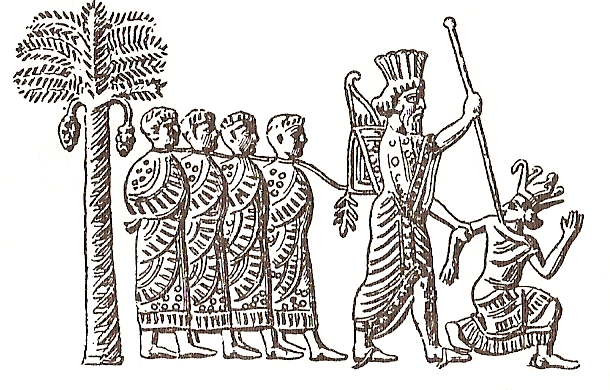
In early 525 BC, Cambyses II of Persia laid siege to the (then) Egyptian cities of Gaza and Memphis. Pharaoh Amasis II died before the attacks, so his son and heir, Psamtick III, met the Persian force outside the city of Pelusium.
Cambyses, knowing the Egyptian reverence for cats, ordered his men to paint cat faces on their helmets and drove a horde of live cats before them. The Egyptian soldiers refused to harm the cats, so they panicked and retreated, ensuring a Persian victory.
As a result, Egypt became a province of the Achaemenid Empire.
2. Battle of Carrhae
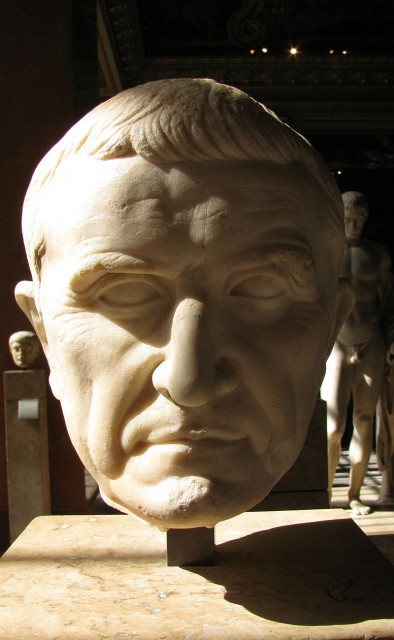
In 53 BC, First Triumvirate Marcus Licinius Crassus led a Roman force into Persia, hoping to extract tribute for the Roman Republic. On May 6, his army of about 50,000 men camped before the town of Carrhae. Defending it was the Parthian General Spahbod Surena with about 10,000 men on horseback.
As the Romans advanced, the horsemen retreated in a panic. Crassus’ men followed, but the Parthians doubled back in two lines flanking the Roman advance and firing a volley of arrows. The Romans were defeated and Crassus was executed, with his death, the First Triumvirate ended.
3. Battle of Tours
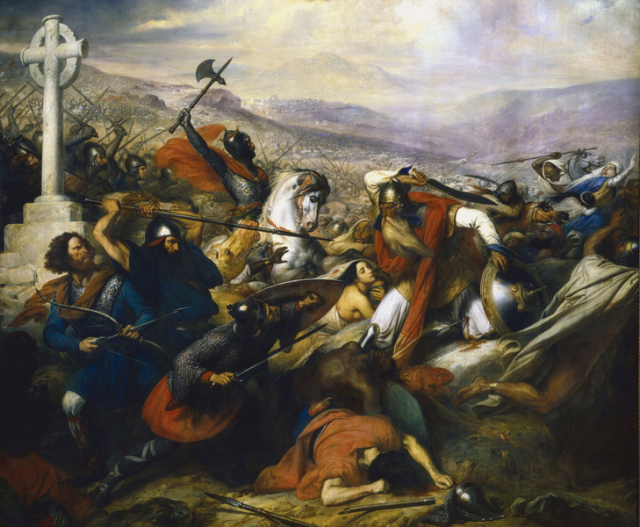
In 711 AD, Ummayad forces landed on the Iberian Peninsula and spent the next 21 years expanding into the rest of Spain and France. By 732, they had made it to the River Loire, but had overextended themselves, so they slowed their advance.
In October, a Frankish force led by Charles Martel attacked the Ummayad army under Abdul Rahman Al Ghafiqi near the village of Moussais-la-Bataille. Martel won, forcing the Ummayads to retreat over the Pyrenees and ultimately out of Europe.
More battles would follow, but Martel’s victory is still hailed as the turning point which ensured the future of Christian Europe.
4. Battle of Hastings
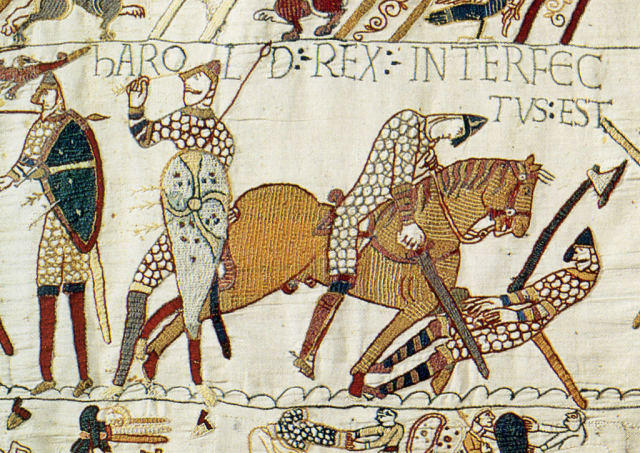
eye with an arrow by a mounted Norman knight
William II of Normandy invaded England and fought the English King Harold Godwinson on 14 October 1066 near Hastings. Since the English had lodged themselves atop Caldbec Hill, the Norman forces below couldn’t break through.
To end the stalemate, the Normans feigned a retreat. Believing they had the advantage, the English poured down the hill in pursuit, but were mowed down by Norman cavalry and archers. Harold died, resulting in further chaos as the English were routed.
Norman rulers supplanted the local aristocracy, changed the language, and were the source of Britain’s obsession with the class system.
5. Battle on the Ice
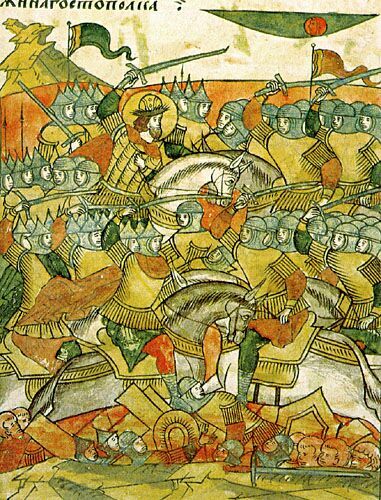
As part of the Northern Crusades against pagans and Eastern Orthodox Christians, the Teutonic Knights attacked the Republic of Novgorod under Prince Alexander Nevsky on 5 April 1242. Novgorod was already weakened by fighting the Swedes, the Mongols, and the Knights, so Alexander ordered his men to retreat to Lake Peipus, which was still frozen.
The Crusaders were not adept at fighting on ice, while the Novgorodians were. The latter also understood the lake and where the ice was thickest, while the Crusaders did not.
Alexander’s victory ended further crusades against the north for another century.
6. Battle of Chamkaur
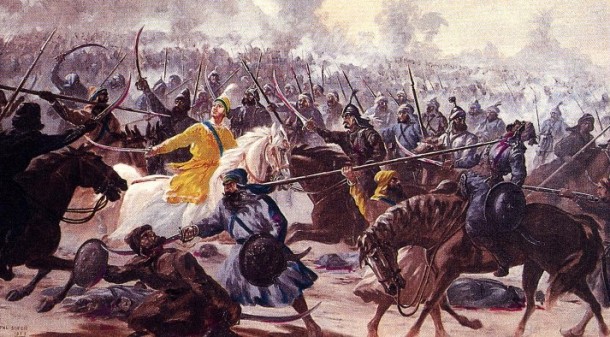
In 1704, Gobind Singh, the 10th Guru of the Sikh religion, was trapped in Anandpur Fort with 40 of his followers. To end the siege, the Moghuls granted them safe passage out on December 5, so they went to the city of Chamkaur.
The Moghuls followed. Forty Sikhs fought them off to the death from December 21 to 22, allowing Gobind to escape. Their sacrifice and martial skills so impressed others that many converted.
To commemorate their valor, Gobind wrote the Zafarnama (declaration of victory), which became a religious doctrine to justify violence when peaceful means fail.
7. Napoleon’s Invasion of Russia
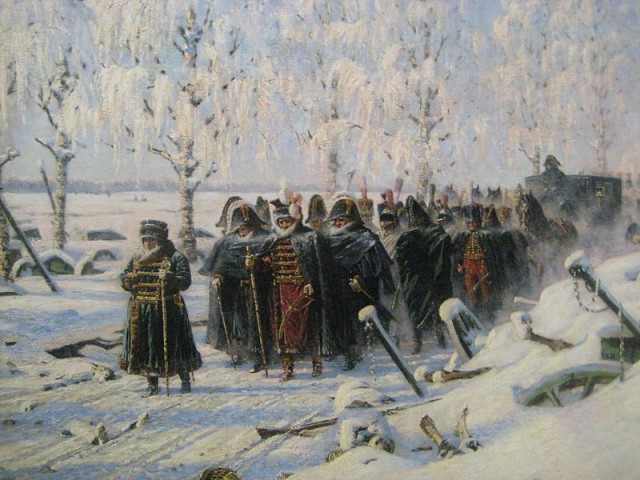
On 24 June 1812, Napoleon invaded Russia with 680,000 men to get Tsar Alexander I to stop trading with Britain. Instead of facing him, Russian forces retreated, letting the French capture towns and cities.
As winter drew closer, they burned their own fields to starve the invaders out. Napoleon made it to Moscow on September 14, only to find it largely empty and burning. He was forced to retreat, but it was too late. Winter had started and the Russians began harassing his retreating forces.
By December 14, barely 22,000 men made it out of Russia.
8. 1920 Battle of Warsaw
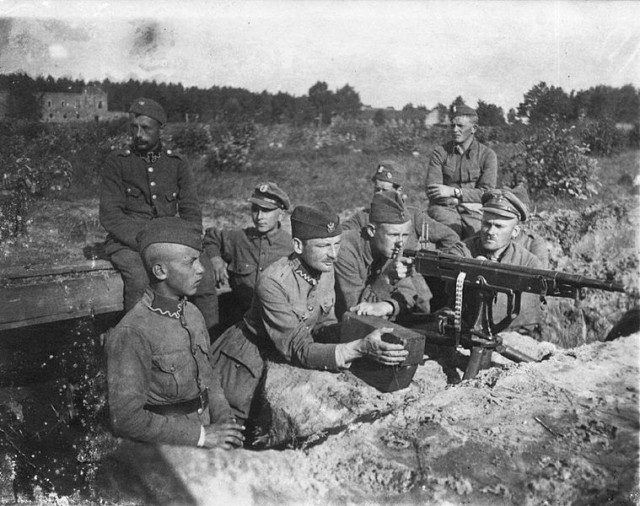
Russia and Poland had been at war since 1919 over Ukraine, but in June 1920, the Russian 1st Cavalry Army defeated the Poles, forcing them to retreat. By August 16, the Russians were close to the capital at Warsaw.
The Soviets tried to surround the city, but failed to adequately defend their southern flank. Polish Commander Józef Piłsudski took advantage of this and routed the invaders. Russian losses were high, estimated at 10,000, while the Poles lost 4,500.
This would secure a peace treaty with Russia till 1939 when half of Poland was annexed into the Soviet Union and the other half by Nazi Germany.
9. Battle of Kursk
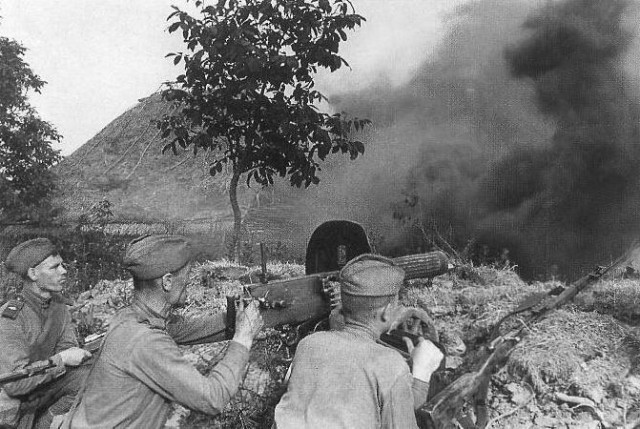
The battle started on 5 July 1943 as part of Germany’s invasion of the Soviet Union. Kursk is some 280 miles south of Moscow, the Germans hoped to overcome superior Russian numbers by nullifying the Kursk salient and thereby shortening their own lines of defense.
But Allied intelligence had warned the Russians, so they dug in. The Germans also delayed their attack as they awaited reinforcements, giving the Russians even more time to prepare. By August 23, the German attack had failed and they were routed from Kursk.
It was one of many major German defeats in WWII, allowing the Soviets to go on the offensive and causing the Germans to ultimately retreat all the way back to Germany and losing the war.
10. Battle of Chosin Reservoir
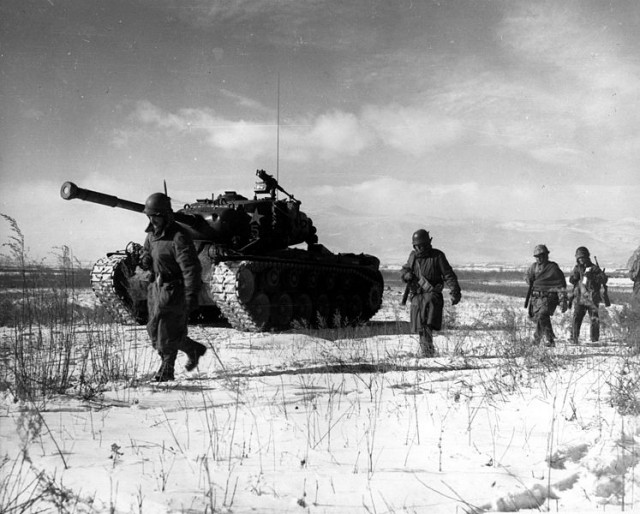
the Chosin Reservoir.
On 25 October 1950, the US X Corps under Major General Ned Almond were spread out along the Chosin Reservoir, as were other American units. They thought the Korean War was won when suddenly the Chinese People’s Volunteer Army under General Sòng Shílún attacked.
Almond contacted the other units and ordered a retreat toward the coast. Despite being surrounded and dealing with the freezing weather, some of the Americans fought their way out and were rescued at Hungnam – known as the Chosin Few.
There were 2,000 American fatalities to the estimated 35,000 killed on the Chinese side.
